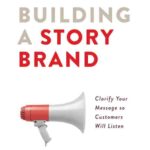Most people think marketing ends the moment a sale is made. The customer paid, the transaction is complete, and it’s time to move on to the next lead, right? Not quite. In fact, this is where some of the most powerful marketing opportunities begin—if you’re willing to invest just a little more effort.
Think about it: When was the last time a business truly thanked you for your purchase in a meaningful way? A generic “order confirmation” or “rate your experience” email doesn’t count. We’re talking about a heartfelt note, a personalized card, or even a quick phone call. If you’ve ever received one of these, chances are you still remember the business—and you’ve probably told a few friends about how great the experience was.
Following up after a sale is more than just good manners; it’s smart business. A timely thank-you note—delivered within a week—can differentiate your brand in a crowded marketplace. It’s a subtle yet powerful reminder to your customer that they’re more than just a number.
Related Post: Why a Recap Email After Sales Meetings Is So Important
And it doesn’t have to stop at just one follow-up. Ongoing engagement after the sale is where customer loyalty is truly built. Research has shown that 80% of business is lost due to apathy after the sale. That’s a staggering number. All that time, energy, and marketing dollars spent on customer acquisition are gone simply because the business failed to nurture the relationship.
Here are a few easy and effective ways to implement a post-sale follow-up strategy:
- Send a handwritten thank-you card within a few days of purchase.
- Follow up with a personalized email or phone call asking if everything met their expectations.
- Celebrate customer milestones—birthdays, anniversaries of their first purchase, or even seasonal holidays—with thoughtful messages or exclusive offers.
- Send a feedback survey or questionnaire to involve them in improving your business.
- Offer a special promotion for returning customers or referrals.
A good CRM (Customer Relationship Management) system can help automate and personalize many of these follow-ups. But even without advanced tools, a simple spreadsheet and a commitment to consistency can go a long way.
One of the most overlooked follow-up strategies is sending a note on the anniversary of when they first became a customer. It’s unexpected and memorable. A simple message like “We’re celebrating one year of having you as a customer—thank you!” makes people feel valued, which is something automation alone can’t fully achieve.
Don’t forget seasonal touchpoints either. Sending holiday cards—especially ones that are non-promotional—can show that your relationship with your customers extends beyond sales.
If you’re unsure where to start, take inspiration from companies known for their legendary customer service. Brands like Zappos and Nordstrom have built reputations (and loyal customer bases) not just through great products, but through exceptional follow-up and personalized support.
Post-sale engagement is more than just a retention tactic—it’s a growth engine. Happy customers don’t just buy again. They tell others. They become brand advocates. And those advocates bring in referrals, often your best new customers.
Think of follow-up as relationship marketing. You’re not just selling a product or service; you’re nurturing a connection. And in a world where people crave authenticity and recognition, even a small gesture can go a long way.
Have you included a follow-up in your marketing plan?












